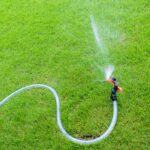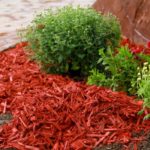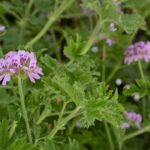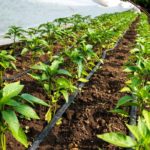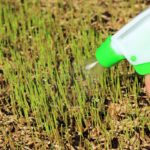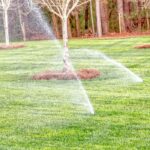Too much heat can stress out a plant and stunt its growth. And if it doesn’t get enough water, a plant can wilt and turn brown before eventually dying. For these reasons, watering your plants during a heat wave is essential — but how do you do it properly?
During a heatwave, water your plants deeply and frequently — for up to an hour 2-3 times a week. The best time to water them is either from 6-10 am or 4-7 pm. Avoid watering them when the sun is at its peak. The best way to water your plants is by using drip irrigation or soaker hoses.
Those are the basics, but there’s a lot to consider when it comes to watering plants in a heat wave. Let’s take a closer look at the best time to water your plants and the watering sources you should use, so that you can properly take care of your plants in such harsh weather.
What’s the Best Time of Day to Water Plants During a Heat Wave?
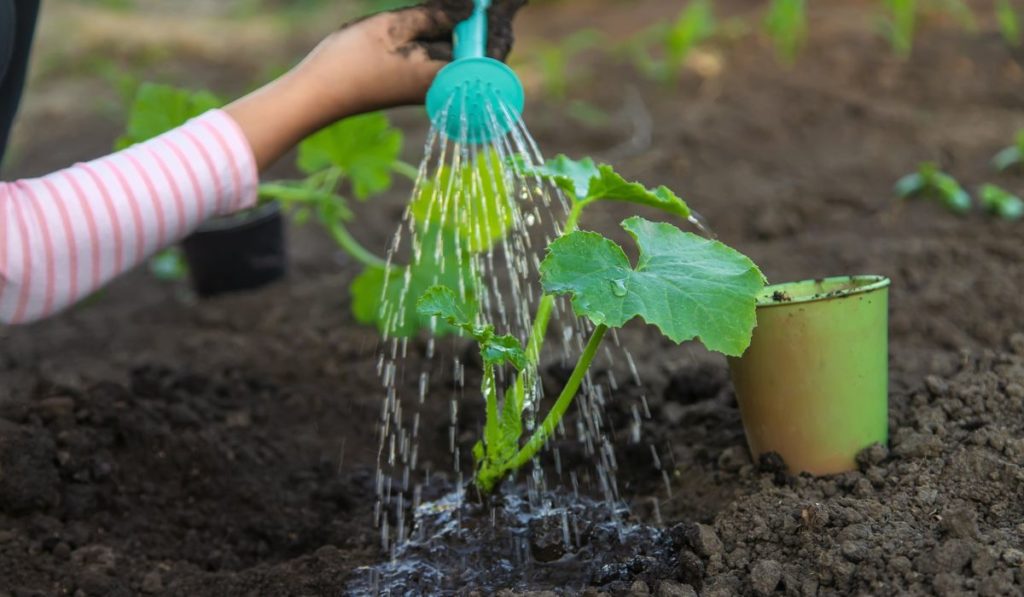
The best time to water your plants during a heat wave is before the heat really starts to set in, which is typically from 6 to 10 am. This will give your plants sufficient time to absorb as much moisture as possible, and for the moisture on the leaves to dry out before it starts to get dark.
However, if you don’t really have the time to water your plants in the morning, the next best option is 4 to 7 pm. Avoid watering plants at night unless you live in a dry and arid climate. This is because wet conditions encourage the growth of bacteria and fungi. Wet conditions may also attract pests like earwigs, snails, and slugs.
Watering the plants when the sun is at its peak isn’t really recommended. In the morning, when the sun isn’t so blazing hot, both the soil and the air are cooler, which helps reduce evaporation. Plus, plants absorb water much better when they aren’t under stress from the heat, which is most likely to happen as the sun reaches its peak.
That’s not to say you can’t water them at midday; you definitely can, but it’s just not the most efficient option.
Caring for New Plants During a Heat Wave
New plants are at a high risk of drying out during a heat wave because they’re not completely rooted to the ground. This is why you shouldn’t skimp on caring for them in times of extreme heat. Here are some things you can do to make sure your new plants survive the harsh weather:
Give Sufficient Water
New plants can benefit greatly from deep watering. Ideally, you should water the plants slowly, long enough for the water to go deep into the soil right to the roots. This usually means watering the plan for 30-60 minutes twice or three times a week until the plant is established.
Once the temperatures go down to normal, you can continue watering them deeply, but change the frequency to once or twice a week.
In-ground perennial and annual plants can also benefit from a deep soaking three times a week. Letting the water seep slowly but fully into the soil ensures that the plant’s roots grow stronger and deeper, and it saves them from the dry soil surface.
Container plants, especially those in small fabric or clay pots, are much more likely to dry out compared to those planted in the ground. Such potted plants require special attention during a heatwave and may need watering daily or even multiple times a day if it’s too hot.
To make sure you don’t overwater or underwater your plant, you should water it when the top 2 inches of the potting soil starts to feel dry.
You can also give your plants a gentle shower during the day, especially if they’re heat-sensitive or very fragile. Heat-stressed plants tend to be more susceptible to different pests such as aphids, but you can control them using a blast of water. Plus, a quick, cool shower can give a drooping plant some relief since it helps bring down the leaf temperature and avoid stress caused by the heat.
Use Tree Bags for a Limited Time
You can also use tree bags (on Amazon) for your new plants, but you should only do so for short time periods. You should remove the plants between the watering sessions so that you avoid rot at the plant’s base. Using a tree bag for an established tree isn’t really effective since the roots of a grown, mature tree extend much further than just the trunk.
Use a Plant Mister
Frequently mist plants that love humidity such as hibiscus, elephant ears, and ferns during a heat wave. If it’s breezy, you can mist them a couple of times a day and water them once more in the late afternoon to promote humidity.
Group container plants together to increase humidity. It’s also a good idea to place them under the canopy of bigger trees or plants.
Provide Sufficient Shade
A heatwave is particularly hard on new plants that don’t have a strong root system. It’s better if you keep them in areas with shade cloth or umbrellas to keep the heat stress to a minimum. If your plants are in containers, keep them in a partially-shaded area.
What’s the Best Watering Source for Plants During a Heat Wave?

The best way to make sure all the plants get consistent water is to use soaker hoses (on Amazon) or drip irrigation (also on Amazon). Both direct the water towards the root zone. If you still water everything by hand, consider installing a drip irrigation system to make things easier.
And while soaker hoses aren’t as customizable as drip irrigation systems, they’re easier to set up and are great if you have a smaller area to cover. You’ll also have to keep them switched on for 30-60 minutes.
What Are the Best Plant Care Products for Plants During a Heat Wave?
There are two things you should definitely get for your plants during a heatwave:
Shade Cloth
A shade cloth like this one from the Easy Gardener store (on Amazon) can help regulate temperatures and lower transpiration. Depending on the shade factor, the cloth can block 25-90% of the sun, but it still lets in crucial water and light.
Liquid Seaweed Fertilizer
Liquid seaweed fertilizer (on Amazon) includes enzymes, minerals, and vitamins that stimulate natural growth. It’s particularly great during a heatwave since it provides plants the nutrition they need to survive the high heat.


